Lafayette man, 68, becomes first person to die of COVID in Boulder County
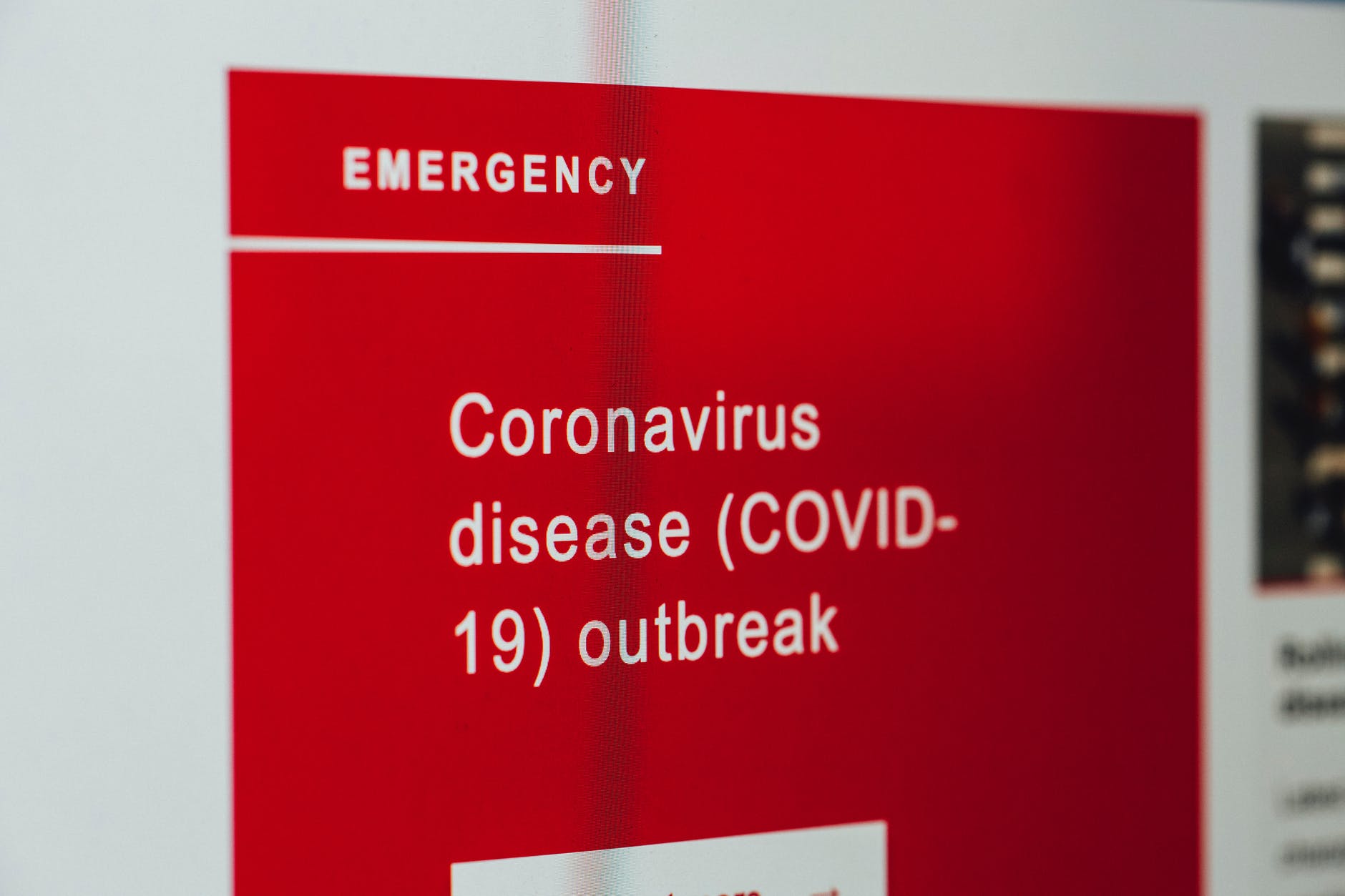
Saturday, March 28, 2020
In the two weeks since Boulder County saw its first confirmed case, 81 people have been confirmed to have COVID-19 — though health experts warn the real number of infections likely numbers in the thousands — and the fast-moving virus has claimed its first victim. The entire state is now in lockdown mode, a move officials hope will slow the spread and keep hospitals from becoming overwhelmed.
Dan Vigil, 68, died at a Lafayette hospital March 22, days after first exhibiting symptoms. Vigil had unspecified underlying health conditions, according to Boulder County Public Health.
In the wake of his death, Vigil’s family had a message: Take this outbreak seriously. At a Tuesday briefing to city council, local health officials issued the same warning.
So far, the local hospitalization and fatality rates are roughly in line with national statistics, BCPH Executive Director Jeff Zayach said. Roughly 10% of patients become hospitalized and 1% succumb to the suite of respiratory illnesses caused by coronavirus.
The most current data suggests that 80% of COVID infections will result in mild symptoms. That appears to be holding true locally: Of 81 total confirmed cases, 10 people have been hospitalized. Seven people are being investigated and 34 have recovered, according to BCPH spokeswoman Chana Goussetis.
Early data suggested that those over 60 and/or with existing health conditions were most likely to experience severe complications. But as the virus has fanned across the U.S., nearly 40% of those hospitalized
have been under 55 years old.
Locally, the vast majority of those with COVID locally are under 60 — 72%, according to numbers shared by Zayach on Tuesday. Goussetis on Saturday confirmed that the average age of community members testing positive is 45.
Boulder County COVID cases by age
19-29 years old: 28%
30-59: 44%
60+: 28%
Colorado COVID cases by age
20-29: 15%
30-59: 50%
60+: 31.44%
Source: Boulder County Public Health, Colorado Department of Public Health
Of the 10 hospitalized patients in Boulder County, one was under the age of 60. But the dataset is still extremely small; numbers may begin to mirror national trends with continued community spread.
In Colorado, of 1,329 people ages 20-60 with COVID, 120 were hospitalized, in keeping with Boulder County’s early trends.
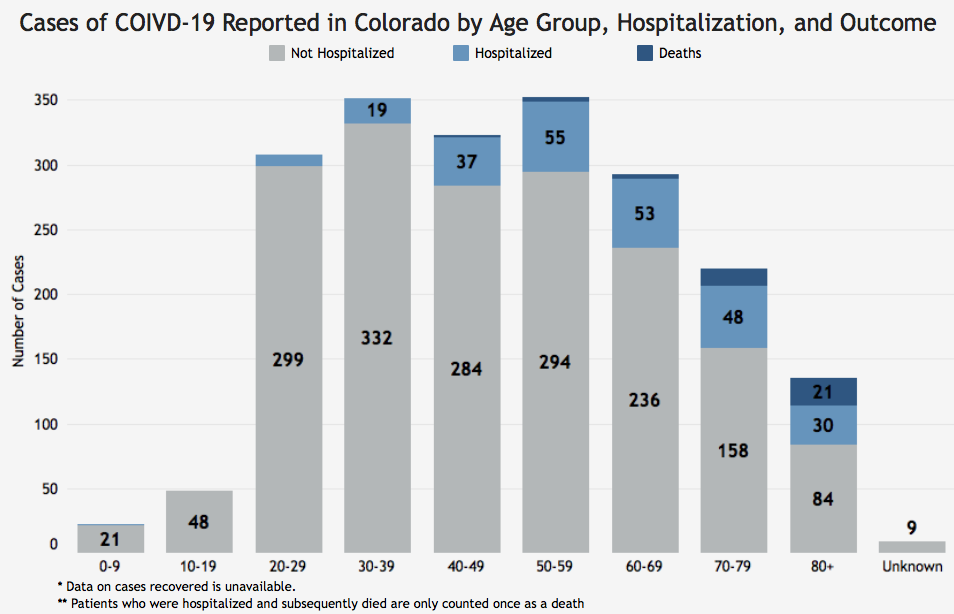
The high percentage of infections in younger populations is “concerning to me because I think in general younger people have taken some of the measures less seriously,” Zayach said. “The virus is to be taken extremely seriously” by every age group, “but we want to remind people that most people are going to recover from this and are going to be OK in the long run.”
Author’s note: At the council meeting on Tuesday, Zayach initially said that 70% of hospitalizations were of people under 65, rather than 70% of infections.
Read a Twitter play-by-play of Tuesday’s update and council discussion here.
Early cases of community spread were attributed, in part, to St. Patrick’s Day parties on University Hill. Councilwoman Mirabai Nagle on Tuesday asked about enforcement of the statewide stay-at-home order, specifically among college students.
“We won’t be arresting anybody,” City Manager Jane Brautigam said, “and probably not issuing tickets” except perhaps to repeat offenders. “Our police can’t be enforcing every person who might be out on the street. We intend to enforce this through education and encouragement.”
Boulder County Public Health will also be focusing on education and reducing crowds. There are still “a lot of people out, gathering,” Zayach said.
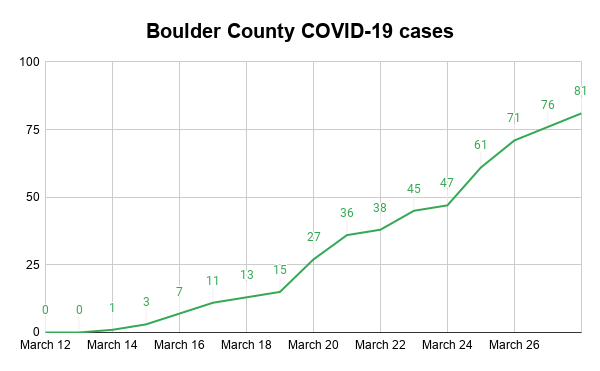
Key dates
March 13: Boulder County Public Health urges social distancing
March 15: All city facilities closed
March 16: Bars, restaurants closed in Boulder
March 17: Bars, restaurants, gyms, theaters, etc. closed statewide
March 24: Local stay-at-home order goes into effect at 5 p.m.
March 26: Statewide stay-at-home order goes into effect at 8 a.m.
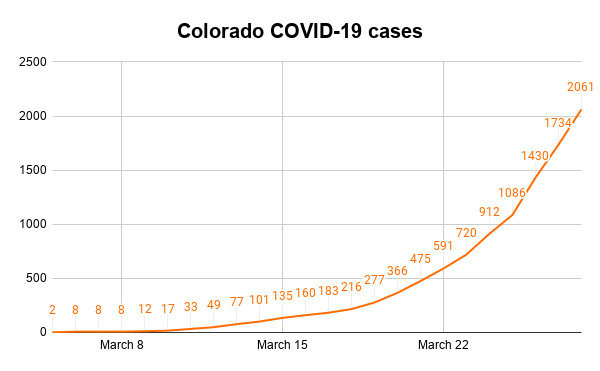
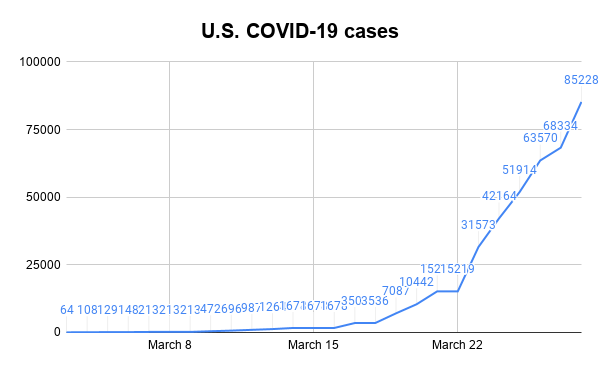
It’s still unclear what impact, if any, social distancing measures are having, Zayach said, a picture that may emerge more clearly with more time and data. He was appreciative of Boulder’s stay-at-home order, which came one day head of the state’s, and adamant that it would allow infections to occur over a longer time period and lessen the impact to our local health system.
Boulder Community Health Director Robert Vissers echoed that.
“Ideally we want less people infected,” he said, “but even if we can spread it out over a couple months rather than a couple weeks,” that will help our capacity. We “expect to have a challenging couple months ahead, (but) it’s very heartening and encouraging” to local government acting quickly.
Vissers said the Foothills hospital is still in good shape “at least compared to other parts of the country,” though personal protective equipment supplies remain constrained throughout the region and nation. BCH is particularly struggling to provide enough gowns.
The community has stepped up, donating masks and gloves. Boulder Library’s makerspace, BLDG 61, is 3D printing masks and has posted instructional videos to YouTube in English and Spanish.
“A surge” in cases is expected sometime in late April or May, Zayach said. There aren’t specific predictions for Boulder County, in terms of the number of local infections that might be seen locally.
Zayach has repeatedly said the best estimate for community COVID prevalence is 50 times that of confirmed cases — 4,050, based off Saturday’s updated report.
Did you know: At the peak of the 1918 flu pandemic in Boulder County, 649 residents were ill. The city was placed under quarantine. “Schools, churches and even movie theaters were closed, and dances and social and club gatherings were banned. Housewives were urged to report any peddlers who came to their doors with non-essential goods.”
Source: Historian Silvia Pettem, writing for the Daily Camera in 2009
BCH can provide up to 230 beds, including 57 intensive care beds, Vissers said. It currently has 4-5 ventilators but could “modify” other machines to serve a similar purpose, creating capacity for 30 patients “and probably beyond.”
If enough people get seriously sick at the same time, it would be easy to get overwhelmed. There aren’t extra supplies to go around in Colorado: The state will need “three to four times” the number of ICU beds and ventilators that it currently has to deal with a growing outbreak.
If our capacity is below the peak of the predicted surge, Visser said, “that clearly will cost people’s lives.”
Governor Jared Polis last week formed a task force that will facilitate manufacturers to make needed equipment. President Donald Trump, using powers granted under the Defense Protection Act, on Friday ordered General Motors to begin manufacturing ventilators.
Also in the works, locally, is a plan for where to put patients who are in recovery but still contagious, thereby freeing up hospital capacity for COVID patients. Vissers said officials are looking at hotels and dorms.
Roughly two-thirds of CU students — more than 5,000 — who live on campus have moved out following a university request, leaving several hundred behind, according to a report from CU Independent.
Boulder County Public Health and BCH are scheduled to return to council on Tuesday for another update.
— Shay Castle, boulderbeatnews@gmail.com, @shayshinecastle
Want more stories like this, delivered straight to your inbox? Click here to sign up for a weekly newsletter from Boulder Beat.
Uncategorized BCH Boulder Boulder Community Health Boulder County Public Health capacity city council coronavirus COVID COVID-19 CU Independent Daily Camera Defense Protection Act education enforcement General Motors health orders hospitalizations ICU ICU beds infections Jared Polis Jeff Zayach pandemic stay-at-home orders ventilators


Can you get more information on patients brackets?
Immune compromised vs, not
Smokers, vapers, cannabis users
overweight, obesse, normal
people need early signs of risk
I don’t think so at this time, Eduardo, but I’ll make the request, at least for local stats. But thanks for the reminder to note that in reporting on age, some of these other factors might not be known. Health officials are typically noting when there are underlying health conditions, but I’m not sure what all that includes. I’ll find out.
For future reference, all my commenters must use their full first and last name. If this is an issue for you, feel free to email me and we’ll discuss. Thank you.